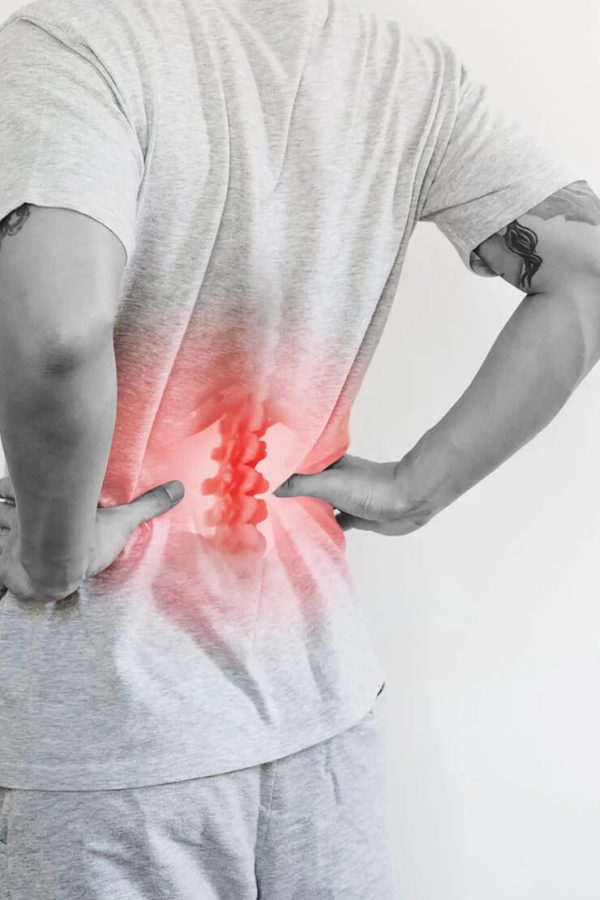Refer a Patient
iScope is currently accepting new patients. A referral from your primary care physician or specialist is required for consultations covered by your provincial plan. If you require rehabilitation services a referral is not required.
A chronic pain clinic, often called a pain management clinic, is a type of medical facility that focuses on identifying, analyzing, and treating diseases involving chronic pain. Our Langley pain clinic frequently employs a multidisciplinary approach, with a group of medical experts from several specialties cooperating to offer complete care for people with chronic pain.
The identification and treatment of chronic pain are the main goals of specialized medical facilities and chronic pain management clinics. Medical specialists working in these clinics develop individualized treatment plans for patients with chronic pain conditions. Doctors, nurses, and physical therapists are some of these specialists. Options include counseling, physical therapy, minimally invasive procedures, and medication management. Clinics for chronic pain management may also offer complementary therapies like acupuncture, massage, and mindfulness exercises. These clinics work to raise their patients’ quality of life by reducing their suffering, improving their mobility, and helping them deal with the emotional and psychological repercussions of chronic pain. People who have tried conventional medical treatments without success or who desire a more comprehensive approach to pain management may find these clinics to be extremely helpful.

Regular pain management aims to reduce suffering and improve function so that patients can live more joyfully and productively. Chronic pain is defined as a persistent or recurrent pain that lasts more than three months. Chronic pain may have a considerable negative impact on a person’s quality of life, which can result in fatigue, hopelessness, and difficulty sleeping. Additionally, it could be harder for them to socialize, work, or perform basic tasks. It can affect any part of the body, and certain conditions like fibromyalgia, nerve damage, or arthritis can cause it. Treatment for chronic pain frequently involves a multidisciplinary approach, which may include medication, physical therapy, behavioral therapy, and complementary therapies like acupuncture or massage.
The term “chronic pain syndrome” refers to persistent pain that lasts longer than the standard three to six-month healing time. Although its precise cause is unknown, it is believed that chronic pain syndrome is the result of a complex interaction of physical, psychological, and environmental factors. It can affect any part of the body and typically comes with a range of physical and psychological symptoms. Treatment options for chronic pain syndrome may include a combination of medication, physical therapy, psychological counseling, and lifestyle modifications. In order to develop a specialized treatment program that addresses both the physical and psychological reasons of their pain, people with chronic pain syndrome must work closely with their medical specialists. With the right management, many people with chronic pain syndrome can improve their quality of life and reduce their pain levels.
Monday: 8:00am – 6:00pm
Tuesday: 8:00am – 6:00pm
Wednesday: 8:00am – 6:00pm
Thursday: 8:00am – 6:00pm
Friday: 8:00am – 6:00pm
Saturday: Closed
iScope is currently accepting new patients. A referral from your primary care physician or specialist is required for consultations covered by your provincial plan. If you require rehabilitation services a referral is not required.
Suite 830 – 475 West Georgia St Vancouver, BC V6B 4M9
P: 1-888-550-5508
F: 604-900-7676
Coming Soon Suite 301 – 1111 Lonsdale Ave North Vancouver, BC V7M 2H4
P: 1-888-550-5508
F: 604-900-7676
Suite 301 – 3185 Willingdon Green Burnaby, BC V5G 4P3
P: 1-888-550-5508
F: 604-900-7676
Opening soon at 3670 63 Ave NE , Suite 260
Calgary, AB
P: 1-888-550-5508
Suite 500 – 89 Queensway West Mississauga, ON L5B 2V2
P: 1-888-550-5508
F: 416-900-7006
Coming Soon Virtual Clinic Now Open
P: 1-888-550-5508
© Copyright 2023 Iscope Concussion and Pain Clinics. All Rights Reserved